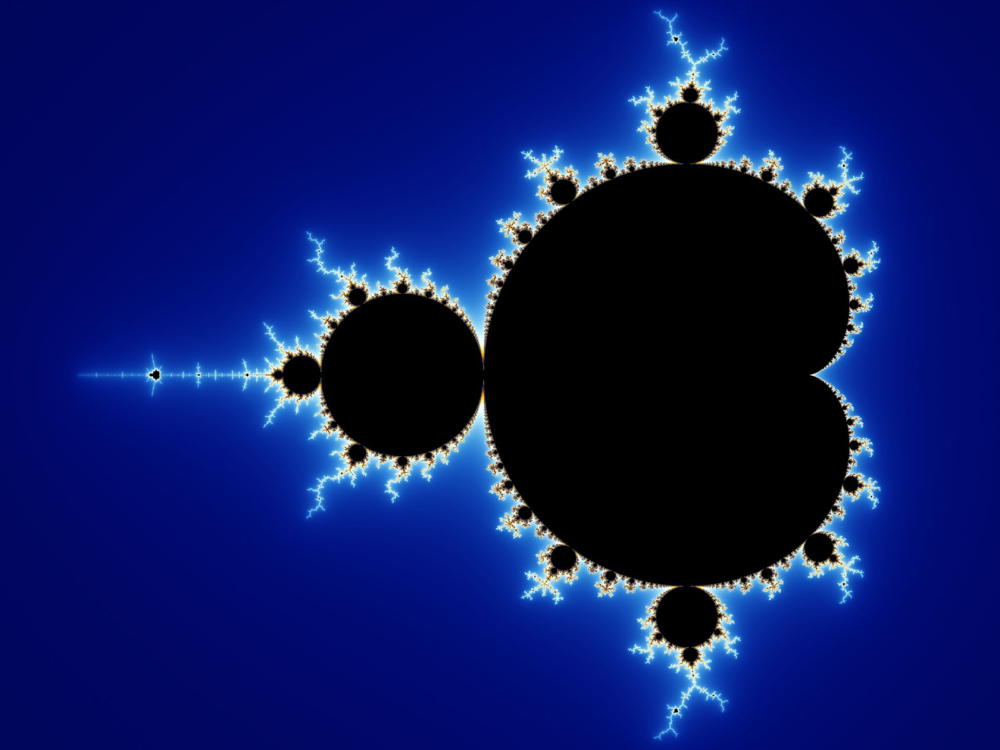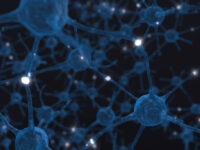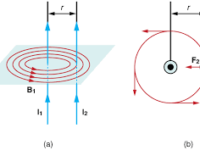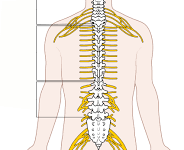Fractals are found everywhere in nature. Benoit Mandelbrot, who formalized the math behind fractals and coined the term in 1975, talks at length about this in his book, The Fractal Geometry of Nature, and it’s certainly something that is discussed frequently in biophysics and biomathematics circles. But the question naturally arises: Why?
The Mandelbrot Set. Photo by Wolfgang Beyer via Wikimedia Commons.
Looking at images of the famous Mandelbrot set fractal can be a bit daunting, but the defining property of fractals is relatively simple: If you zoom into a fractal, you will find the same image you started with. The simplest example of this property, called self-similarity, is actually a straight line — no matter how far you zoom in, it just looks like a straight line.
Self-similarity is also related to a fundamental concept in computer science of recursion, the iterative repetition of a task or process. Biological recursion is much the same; the fractals that are seen in biology are generated structures part of living organisms. Moreover, they appear because of how they are built recursively, iteratively applying the same generative structure on smaller and smaller subsections of the larger form.
Physarum Polycephalum fanning out in a fractal pattern searching for food. Photo via Wikimedia Commons
Everything from the patterns a slime mold makes when looking for food, to the structure of human lungs, to the shape of trees and coral are all examples of a recursive and iterative process. Each example seems disparate and distinct — solving different problems through evolution — yet they all still arrive at the same general methodology. And it’s for a good reason.
One of the biggest issues in growing large organisms is coordinating how to generate new cells. How does the body ensure that some structure is properly developed? One way is to use hormones and other signaling molecules to explicitly tell each cell how to develop, but this is energetically costly and can easily go wrong with hormone deficiencies and other issues. What is easier — especially for uniform structures — is to instead encode a recursive rule into the DNA of each cell. This means that cells are able to know how to spread by following simple rules without any need for knowledge about where they are on the organism’s body.
The idea of recursive rules in genetic code isn’t hypothetical or conjecture. It’s something that has actually been found and studied since the 1990s. Scientists have identified several genes in the airways of fruit flies and in the lungs of mice that are responsible for the branching patterns found in these systems. This special type of fractal, found in cardiovascular systems and respiratory systems, is called a space-filling fractal, which, as the name suggests, fills space as efficiently as possible. In lungs, this is to most efficiently diffuse air from the diaphragm into the bronchi, and in blood vessels, this is to most efficiently diffuse the oxygen from blood into the surrounding cells.
An Illustration of lungs with bronchi. Photo by Patrick J. Lynch via Wikimedia Commons
The study of fractals in nature started before “fractal” was even a word. Seven years before Mandelbrot’s formalism, Hungarian biologist Aristid Lindenmayer formalized a way of generating fractals by starting with a string of letters and defining a recursive rule for how each letter would change or generate new letters with each recursion. By imbuing geometric meaning into the letters, he was able to create fractals that look astonishingly like trees and coral.
Examples of Lindenmeyer systems, or L-systems. Photo via Wikimedia Commons
The kind of system he created — now called L-systems, short for Lindenmayer systems — have been used to define and study all kinds of fractals beyond simply those in nature. Researchers have since created subsequent evolutions of L-systems, including some with a bit of randomness built in to them to more accurately mimic nature and others that are generated by applying a recursive rule at a given location based on a trigger from the surrounding area.
Since then, scientists and mathematicians have applied L-systems recursively to new problems, creating a fractal of information now used to explain everything from microscopic molecules to the structure of forests.






